Why Did My Gold Ring Turned Copper Color? (Easy Fixes)
Learn how to fix and prevent gold discoloration
By Jane Pardo | Updated January 4, 2024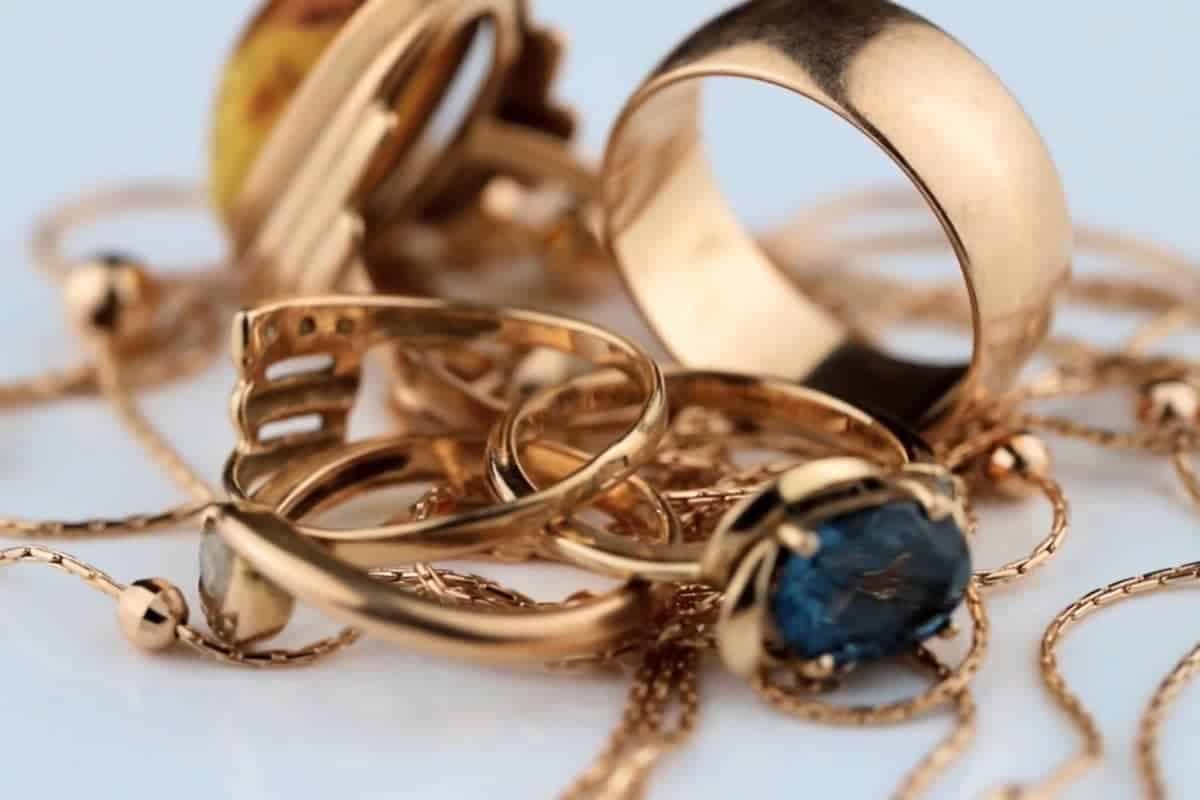
Do you have a gold ring turned copper color? If your gold jewelry starts changing color, it most likely has some non-gold metal components that tarnish over time.
My professional team and I are here to explain gold discoloration and tips to fix unsightly copper-colored jewelry.
Our experience will help you to maintain the stunning beauty of your real gold accessories.
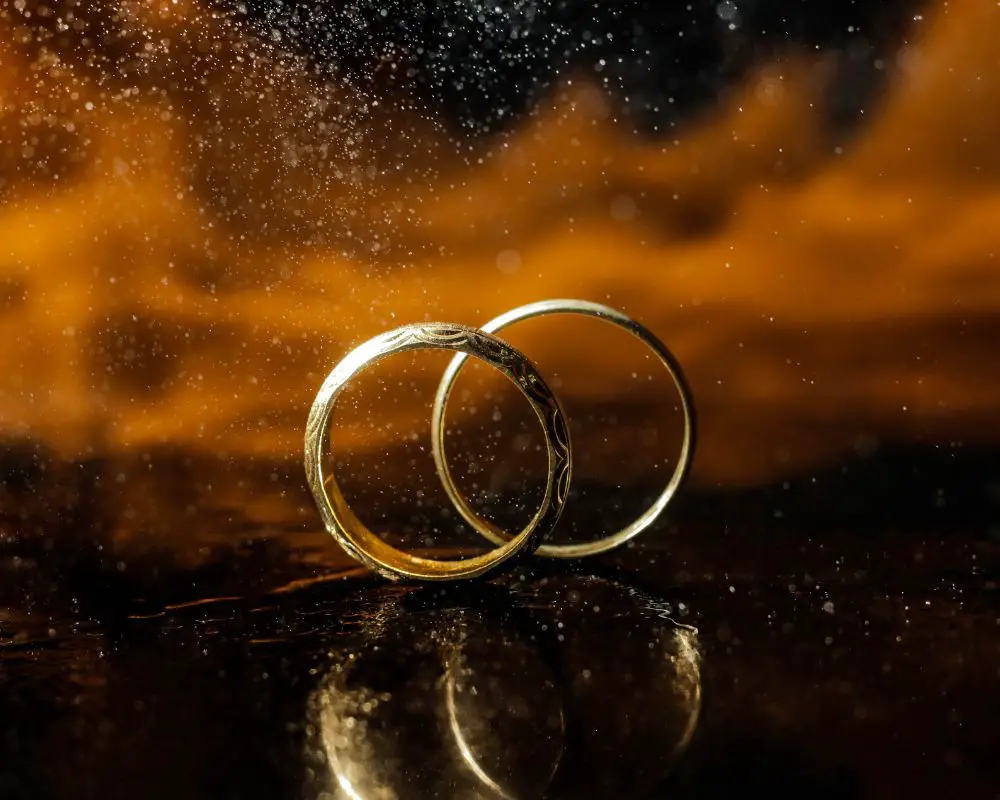
Table of contents
Why gold turns copper color
Pure gold resists fire damage, corrosion, and tarnishing. It retains its beautiful yellow color and stands the test of time.
However, the purest form of gold is a soft metal and prone to damage like dents and scratches.
Manufacturers mix other metals with gold to create alloys and achieve desired properties, such as enhanced durability and color.
For example, they combine gold with other metals like copper, zinc, and silver to create strong, durable, and scratch-resistant yellow gold jewelry.
Rose gold is an alloy combining copper with gold. It looks like brightly polished copper but doesn’t tarnish like copper.
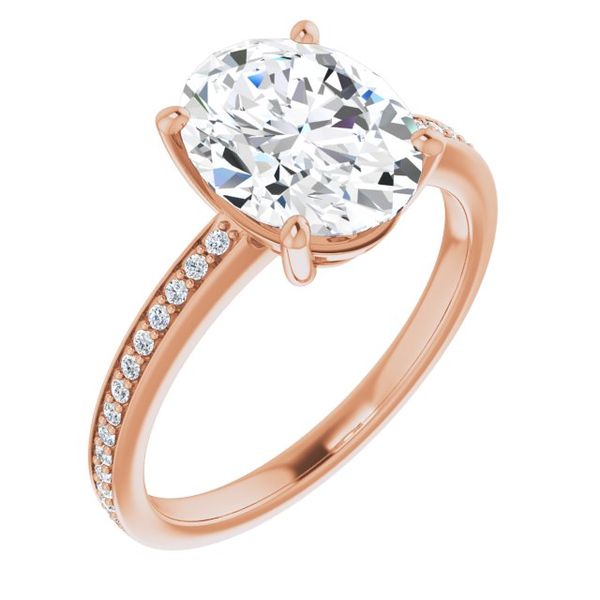
White gold is silver with a hint of yellow, or in the case of our palladium white gold, the color is a gray-silver.
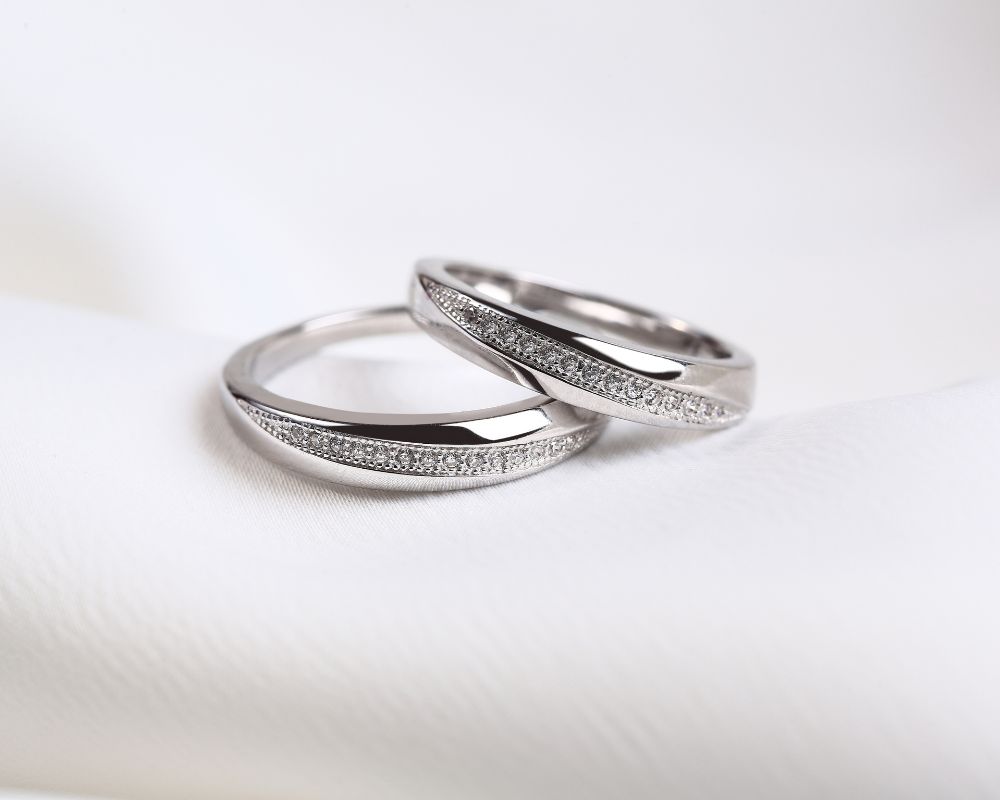
Real gold changes into a copper color because of these base metals.
Reactivity to oxygen
- Pure gold has low reactivity. It doesn’t mix easily with oxygen, so it remains shiny and resistant to rust and tarnishing.
- The base metals in gold are highly reactive to oxygen, eventually causing the jewelry to tarnish.
Oxidation due to sulfur-bearing pollutants in the air
- Gold discoloration occurs due to a chemical reaction called oxidation. This involves slight corrosion of the outer metal, causing jewelry to change color.
- It’s a natural process that happens when metals interact with sulfuric pollutants around us. Gold discolors when a dark sulfide layer forms over it.
- Gold itself doesn’t oxidize. Only the base material contents in your gold will oxidize and cause tarnishing.
Exposure to sweat and moisture
- Additionally, sweat contains fat and fatty acids that could trigger the corrosion of metals in jewelry, particularly when exposed to warm, humid air.
Some gold alloys discolor faster than others, depending on the type and amount of metal mixture.
The higher the purity of your gold jewelry, the slower the process of tarnishing and changing into a different color.
For example, 18k gold has 18 parts pure gold and only 6 parts base metal, leading to excellent tarnish resistance compared to 10k gold.
3 Ways to fix jewelry that has turned copper
We recommend the following techniques to bring back the attractive look of your copper-colored gold jewelry.
Use a gentle cleaning solution.
When gold tarnish, a gentle cleaning solution is ideal for cleaning real gold accessories. You can find gold cleaning solutions in spray bottles or special jar containers with dip trays.
These cleaning solutions can remove tarnish, gunk, grime, and soap residue on real gold and silver accessories.
When using a gold cleaner with a tray:
- Put your real gold in the included dip tray.
- Soak within the manufacturer’s recommended period.
- Remove from the tray and spot-clean hard-to-reach areas.
- Thoroughly rinse with water and buff with a clean cloth.
I recommend the following gold cleaning solution:
Note: Be sure to follow the directions carefully. Find out what types of gold must not be cleaned, like jewelry with low-quality gold plating. Some cleaning products are not ideal for gold accessories with gemstones like pearls and opals.
Use a polishing cloth.
A polishing cloth can help restore the beauty and shine of copper-colored gold accessories.
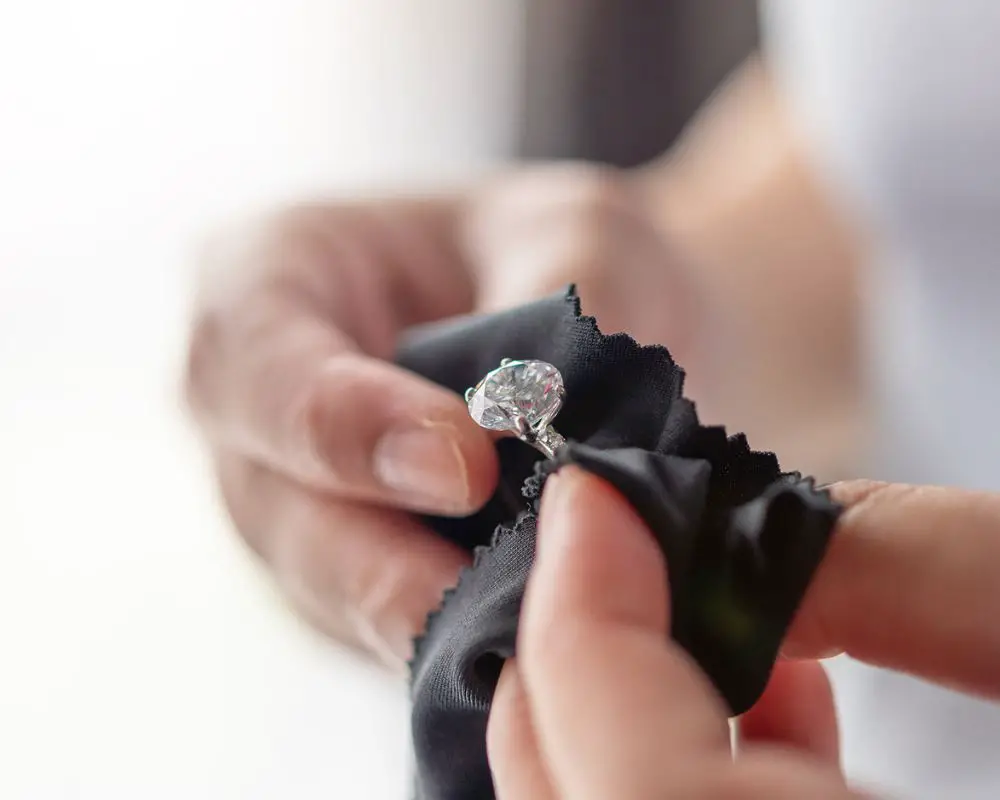
Choose a cloth size that can thoroughly clean your jewelry, whether you have a beautiful ring or a heavy necklace.
- Use the inner cloth to clean your gold accessory.
- After removing dirt and tarnish, use the outer cloth to polish your jewelry gently.
Here’s the polishing cloth I recommend:
Use a homemade dish detergent solution.
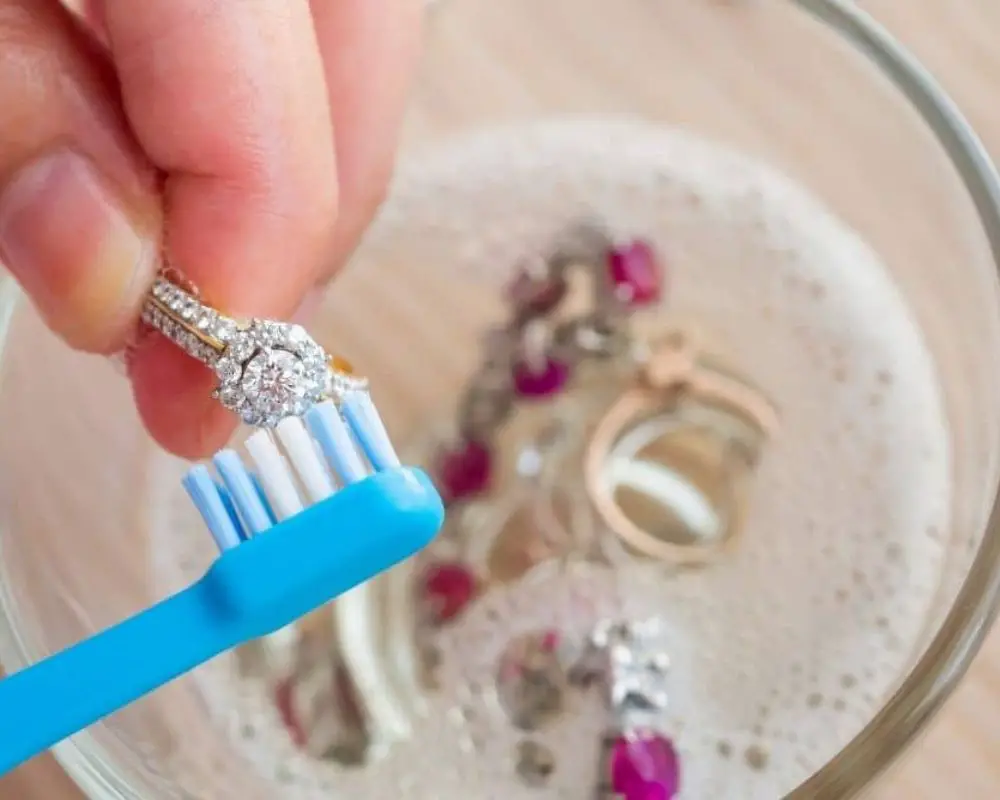
While as effective, you can follow these steps if you want an easy, DIY method using common household items:
- Mix a bit of dish detergent with warm water in a small bowl. Avoid using regular soap or chlorine products.
- Submerge your jewelry in the solution, and let it sit for 5 to 15 minutes. If your gold accessory has stones, it’s best to soak it for a few minutes only.
- Gently scrub it with a soft-bristled toothbrush in circular motions for better results.
- Rinse with lukewarm water to remove any residue, and carefully dry your jewelry with a soft cloth.
How to prevent real gold tarnish
Maintaining the beautiful gold color of your accessories takes proper care and attention.
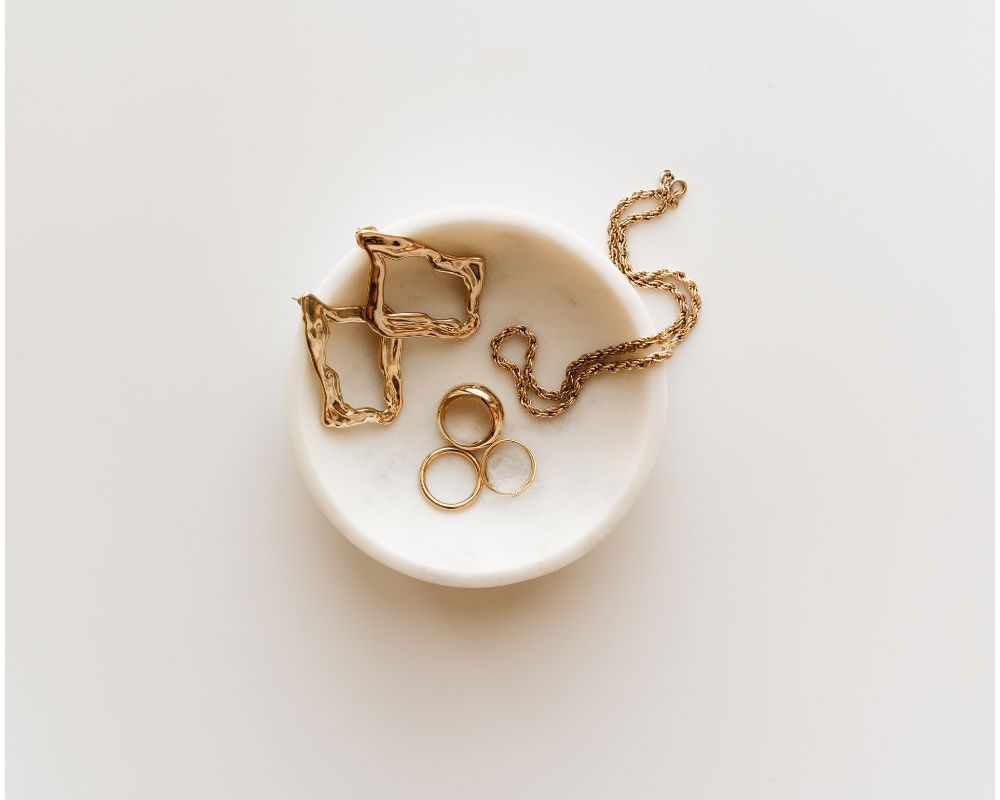
Follow these essential steps to keep your real gold jewelry shiny and tarnish-free for as long as possible.
Avoid exposing your real gold accessories to makeup.
Cosmetics usually have chemical compounds that can rub off tiny metal particles in jewelry.
- Make sure your real gold pieces do not come into contact with makeup containing ferric oxide, titanium dioxide, or zinc oxide.
- Skin care products with traces of heavy metals, such as nickel, chromium, cadmium, and lead, can also damage jewelry.
- Hairspray, perfume, and medicated lotions are also corrosive products you must avoid.
- We recommend removing your gold accessories before applying makeup and skin care products.
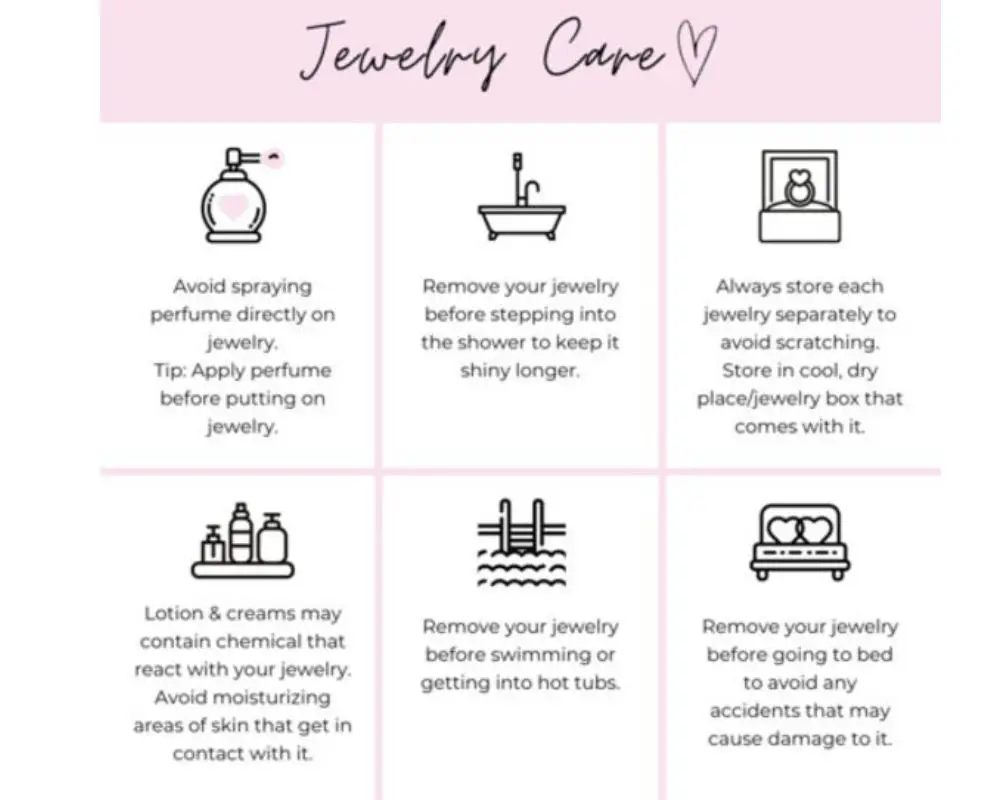
Remove jewelry before swimming.
- Planning a beach summer vacation? Be sure to leave your gold accessories safely away from the sea.
- Exposure to warm, salty air will rust jewelry, particularly those containing non-ferric metals like steel and iron. It’s very harmful to rose-gold pieces as sea salt is corrosive to copper.
- Chlorine in swimming pools can permanently stain and damage real gold.
Tip: Fine gold is durable enough to withstand elements on the beach. Just be sure to take them off before swimming to avoid accidentally losing them.
Take off gold accessories before showering, cleaning, washing dishes, and cooking.
- Safeguard your gold from bleach and other cleaning products with abrasive chemicals. These can stain your gold and make it more vulnerable to corrosion.
- We also recommend removing gold accessories before showering to prevent contact with hygiene products containing elements that can discolor gold.
- Avoid wearing your gold accessories in environments with lots of heat and fire, like the kitchen or a pottery studio.
Store jewelry properly.
- Put your gold in a clean, multi-compartment box with a soft fabric lining. It should have enough spots for organizing all your gold rings, earrings, necklaces, and bracelets.
- You can also get a jewelry armoire featuring doors with hooks for holding necklaces.
- Be sure your gold pieces do not come in contact with each other to prevent scratches.
- Store costume, gold-plated, and gold-filled jewelry separately from more valuable, high-purity gold items.
- Avoid putting your jewelry boxes in locations with extreme temperatures and humidity, like a stuffy attic or a cold, drafty closet. It’s best to store them at room temperature, away from direct sunlight.
- Store fine jewelry like 18k and 22k gold pieces in velvet-lined drawers with secure locks.
Tip: Small silica gel sachets (the ones you find in new handbags and shoes) can help absorb moisture in jewelry boxes.
Avoid frequent exposure to corrosive foods.
Highly acidic and alkaline foods form sulfur compounds that can harm your gold accessories.
These include:
- Citrus fruits
- Onions
- Strongly salted food
- Products with added flavors
- Pulp from organic products
While it’s hard to avoid all these situations that can make gold tarnish, it helps to be aware of the factors that come into play in gold discoloration to slow down your gold jewelry’s tarnishing.
FAQ
Can I use baking soda to remove the tarnish from my gold jewelry?
Avoid using baking soda to remove the tarnish from your real gold jewelry. It is an abrasive chemical substance that can cause hairline scratches when rubbed too hard, particularly on fine jewelry.
What should I do if my gold jewelry still looks discolored?
Take your gold to jewelry stores or a trusted jeweler if it still looks discolored after trying to remove its unsightly copper hue. A professional cleaning will help restore your gold accessory to its original beauty.
Does white gold tarnish?
White gold is a combination of naturally tarnish-resistant metal alloys due to their low chemical reactivity. These metals are resistant to the types of redox reactions that lead to damage. Gold’s chemical stability makes it less likely to lose electrons and participate in these reactions. I hope you found the answer to the white gold tarnish.
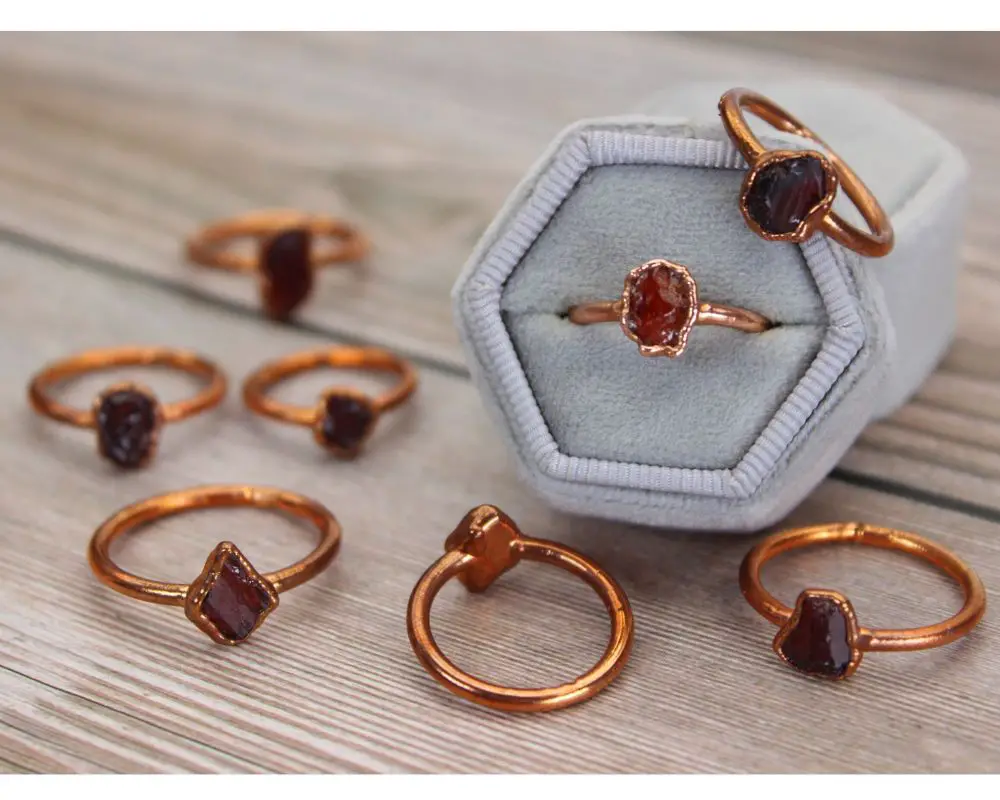
Final thoughts
Gold jewelry turning into a copper color is a natural process, as most gold accessories are alloys with varying metals.
But with proper care, you can enjoy the striking yellow color and attractive shine of your real gold jewelry for a long time.
Written by Jane Pardo

Jane Pardo is our senior gold & silver expert. Jane lends insight into precious metals investing, collecting, testing, and maintenance.
Trending posts under
As participant in an affiliate advertising program, we earn from qualifying purchases.